 As I think I’ve demonstrated over the decades, I’m not technophobic, just technoskeptical. So I try to approach with an open mind the trade shows and expos I discussed in my previous post, staged by the photo and consumer-electronics industries. But, though I understand the makers of these digital doodads roll them out now in hopes of major sales from Black Thursday through the weeks after New Year’s, they caught me at a bad time this year. Earlier this fall, a 1993 Toyota Camry with a defective electronic system tried to kill me. (No harm done to any living thing, fortunately, but some property damage, considerable expense, and several moments of pure terror.)
As I think I’ve demonstrated over the decades, I’m not technophobic, just technoskeptical. So I try to approach with an open mind the trade shows and expos I discussed in my previous post, staged by the photo and consumer-electronics industries. But, though I understand the makers of these digital doodads roll them out now in hopes of major sales from Black Thursday through the weeks after New Year’s, they caught me at a bad time this year. Earlier this fall, a 1993 Toyota Camry with a defective electronic system tried to kill me. (No harm done to any living thing, fortunately, but some property damage, considerable expense, and several moments of pure terror.)
More proximately, on November 10th my 18-month-old desktop Mac Mini stopped working — or seemed to. A USB 3.0 hub I’d recently added to my system may have played some role in that situation. Because I back up to an external hard drive regularly now, using Apple’s Time Machine, I had no data at risk, a blessing.
However, my primary backup computer, my mid-2007 MacBook Pro, had stopped working a few weeks before the Mini did, and none of my efforts to resuscitate it had worked. Fortunately, I have a backup for my backup computer — a 2005 eMac that I’ve barely used since acquiring it in a trade, running OSX 10.4.11 (Tiger), several major OS upgrades out of date.
I’ve loaded onto it an earlier iteration of Microsoft Office, so I could write in Word, fulfilling a current assignment. I could check my email online, surf when necessary (it’s very slow, even with an ethernet connection, and can’t show videos), and basically take care of business till I got my Mini working. That involved two trips into Manhattan with it, plus an upgrade to Yosemite, Apple’s latest OS, and then a full restore of my apps and data files using Time Machine. (The same upgrade and restore seem to have rejuvenated the MacBook Pro.)
So this didn’t qualify as a crisis, merely a considerable inconvenience. No harm done, if I disregard the anxiety this prompted. But it took ten days to sort it all out via visits to Tekserve and the Apple Store in Manhattan, numerous emails to my Mac maven, online searches, multiple cold starts and restarts — much attention and frustration.
Thus it raises serious questions. Closest to home, how can an expensive tool like my Mini simply fail without advance notice after a mere 20 months of commonplace use during which it has sat in same spot on my desk? How can a tool like my MacBook Pro, all of whose working parts got replaced at least once, undergoing a complete factory overhaul just 18 months ago, similarly just quit on me? Why do I need three computers to ensure that at least one works?
Nonutechnology
Which leads me to the larger questions. If these devices will obsolesce in just a few years, so will all their companions. I don’t mind working with tools that aren’t up to date; I buy most of my clothes, kitchen utensils, handtools, books, and other items second-hand. New and shiny doesn’t count for a lot around here; pre-owned items have successfully undergone some testing. I look for utility, and durability.
There’s the rub. I already spend far more time than I care to fussing with my limited array of digital devices — these three computers (and peripherals), plus a recently added cellphone deliberately selected for its limited intelligence. I work with an equally restricted set of apps. If these relatively new devices of mine can fail, temporarily or terminally, at any moment, so can any (or all) others that I might add to my digital toolkit.
As I see it, with every new device and every new app that I incorporate into this setup I challenge Murphy’s Law to bring it on. And while little can go wrong with a stovetop espresso maker or a pair of jeans, or a vintage crockpot or clock-radio, even the simplest digital device has both hardware and software vulnerabilities. If it participates in the much-touted “internet of things” then add the possibility of hacking to the list of “whatever can go wrong.” My personal motto, which you’re welcome to adopt (see downloadable, printable badge, above): Nonutechnology! I’ll introduce no hardware or software to my system unless and until I’m convinced of its utility, stability, and durability.
Onward to the Past
I can’t close without discussing the single most pathetic artifact I encountered among all the stuff paraded at these shows: the Hemingwrite. This object exemplifies everything negative implied in the word skeuomorphic — the lame effort to make a digital device look and feel like its analog ancestor. Here you have a dedicated word processor imitating a 1940s-era portable manual typewriter in general appearance and feel.
Billed as “A Distraction Free Writing Tool” by its inventors (who don’t grasp basic English well enough to know that “Distraction-Free” requires a hyphen), it offers a “Mechanical keyboard,” a “Beautiful retro design,” an “E-ink display with backlight,” and is “Engineered to last decades.” They claim that, because it saves your writing to the cloud but doesn’t let you connect to the internet for email, surfing, etc., its use “completely removes all distraction from our daily connected lives.” (Syntactically garbled, but you know what they mean.)
Hard to decide where to begin telling you what’s wrong with this. Weighing in at 4 lbs., it doesn’t encourage you to take it anywhere; this, with its 8″ x 10″ footprint, will sit on your desk. Its minuscule 6″ x 2″ screen lets you see only a few lines of text at a time — not the full page an analog typewriter or tablet shows you, and not the variable amount, up to multiple pages, that your computer monitor can display. I found its keyboard clunky. As for “engineered to last decades,” I can guarantee you that this, like all current digital tech, will become Jurassic by 2020. And I doubt very much that any serious writer wants to write on a machine named after a famous author, even if they love his work.
The underlying notion of removing distractions strikes me as the initial foolishness of this concept. Removal of distraction is a mindset, not an activity. Great literature gets written in crowded tenement apartments, at the kitchen table with the children running around, in the trenches on battlefields during the lulls between bombardments. It gets written on whatever paper’s available, or any available substitute, with whatever writing tools one can scavenge. Irina Ratushinskaya carved her poems onto bars of soap with matchsticks while in prison, memorized them line by line, then repeated them to her fellow prisoners so they’d memorize them in turn and carry them out to the world when they got released.
That’s how real writing gets written, by real writers — as distinct from the faux-boho moneyed hipster poseurs who strike me as the only likely market for this pretentious piece of pricey junk.
Want the experience of writing on a typewriter, combined with the convenience of digital technology? My recommendation:
• Buy a real typewriter. Desktop or portable, manual or electric — your choice.
• If you really want to rough it, pick a manual model. I still have my portable Olivetti Lettera 22, a classic of 1950s design. (You never know.) I see one of these on eBay for $40. You can probable get one in excellent working order even cheaper, or free, on Craigslist, at your local thrift store or a yard sale, in your parents’ attic or garage.
• Or go a little higher-tech and get a portable electric. I still have my Smith Corona Coronet Automatic 12. (You never know.) There are other good ones out there, at around the same price, from the same sources. You’ll want one with an automatic carriage return, such as this one, I predict. Most make a steady humming sound, some less than others. (And of course the keys of all analog typewriters make sounds when they hit the paper.)
• Or go all-out and get an IBM Selectric. This was the high-end office workhorse of its time, with interchangeable font balls and other then-advanced features. Bigger footprint, not portable (comes with a cover, not a case). Not likely a yard-sale or thrift-shop item; look on eBay and Craigslist, or local stores that sell used office equipment. Migh cost a bit more than a portable, especially if it comes with an assortment of font balls.
• Vacuum the interior of whatever instrument you select when you get it home, then once a year thereafter, to suck out any accumulated dust and paper fuzz. Wipe down the exterior with a clean cloth dampened with a bit of Windex (diluted vinegar will do fine), periodically. Use cotton swabs dipped in rubbing alcohol to clean its keys (especially the ends where the letters hit the inked ribbon) and other metallic interior parts. You’ll need to buy a spare ribbon/cartridge or two, and some correcting fluid or Ko-Rec-Type to fix errors, but it won’t need much else from you — a drop of oil now and then. (You can find user manuals for most models online.) It has already provided decades of service, and is built to provide decades more. Its OS will endure longer than yours will, guaranteed.
• If you don’t mind changing paper at the end of each sheet, buy a ream of multipurpose paper, or recycle the blank sides of junk mail and such that you’d otherwise discard. If you want to write without an interruption at the end of each page, as Kerouac did, then try using continuous-feed perforated computer paper. That might work as a version of his famous “scroll” for On the Road — which, as I wrote some ago, prefigured and prophesized the endless word-processing document.
• Add to this a sheet-fed scanner (if you don’t already have one), such as the VuPointMagic InstaScan™ PRO Auto-feed with LCD panel, and OCR software. Street price: $80.
• Put your typed pages through the scanner at the end of the day, run them through your OCR program, and save your output to your computer as both PDF and text files.
There you have it — the best of both worlds. A classic analog system for your initial input, with analog output, replete with all their ineffable ambience. Plus a digital backup system for subsequent editing, storage, and transmission. You can choose between a fake typewriter like the Hemingwrite, priced at (I’m guessing here) $400, and a real typewriter with a scanner sidekick for digitizing your output that will cost under $150 altogether. On the assumption that the motive for either involves a yearning for the authentic typewriter experience, I see this as a no-brainer.
Which explains my terming the Hemingwrite pathetic, which I mean in the deepest sense of the word. Conceived by wannabes, designed for wannabes, marketed to wannabes, it will immediately define its owners as wannabes. The culture certainly enjoys a surfeit of wannabe writers, but will enough of them covet this misbegotten digital tchotchke to make such a woebegone hybrid a marketing success? I wouldn’t bet on it.
(Part 1 I 2)


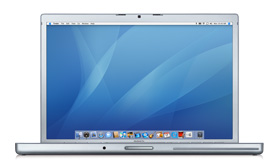


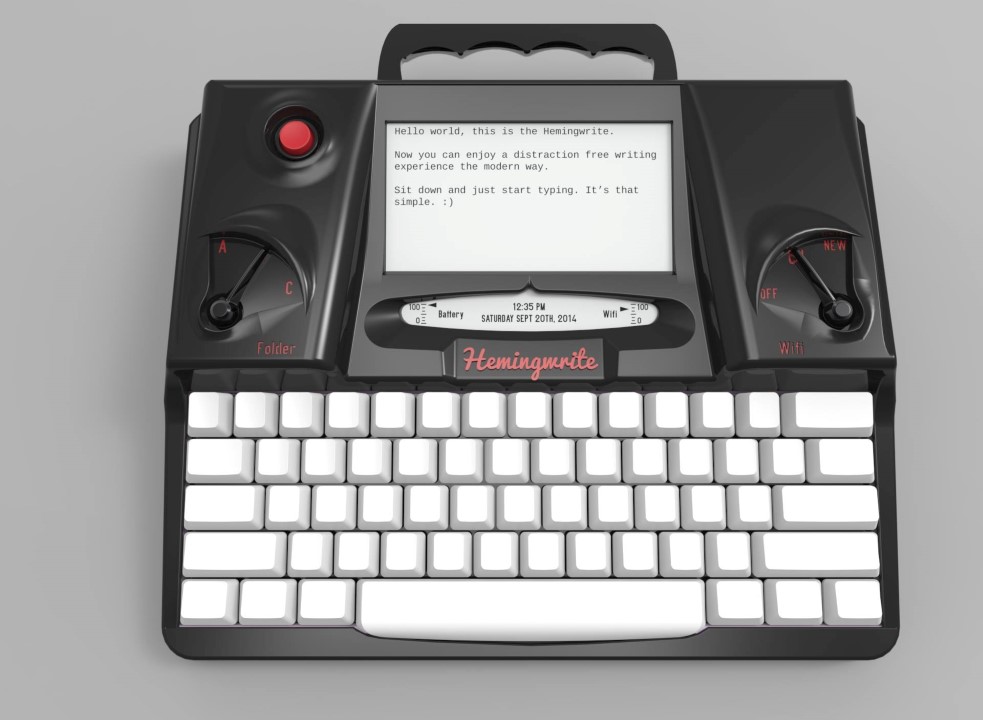
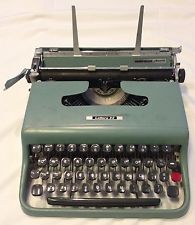
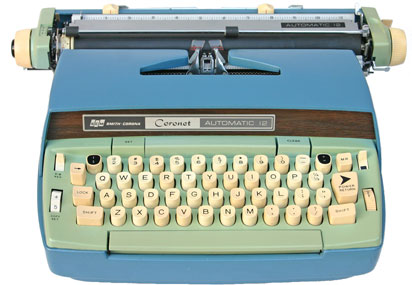
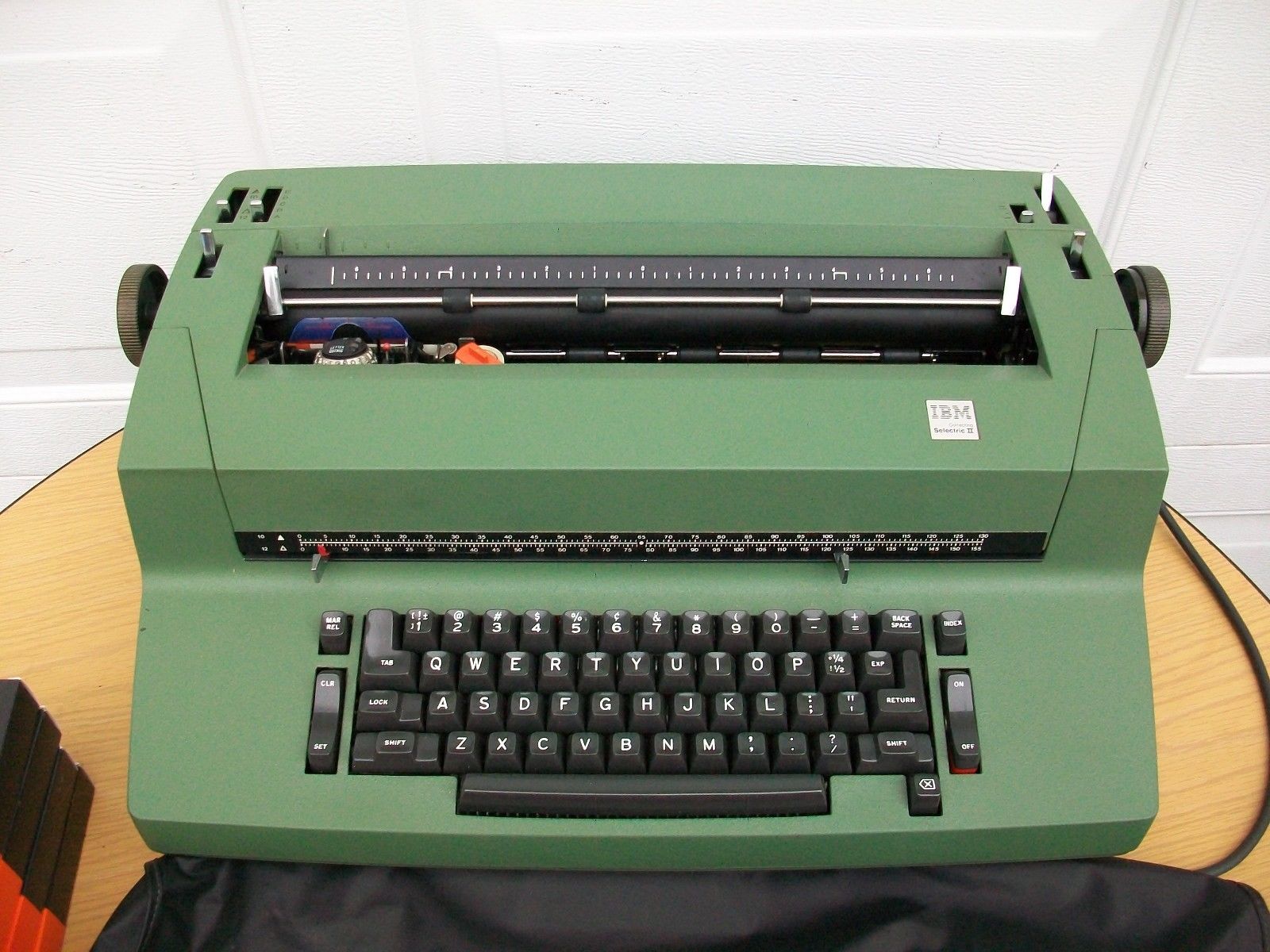





Al,
Love this post. I too am a big ‘used’ fan.
But, it is a losing proposition to fight the so-called progress of the technocracy. I also am fond of the old Olivettis and maintain a portable Brother electric for the sometime letter addressing or label making chores. Just easier.
There are up here a few fix-it free clinics and we just discovered a free geek event once a week at a local library where they provide teenagers who can unravel our ‘senior tech moments.’
One message, for us at least, is that it is necessary to upgrade periodically, despite the costs, lest we face the alternative of unwelcome breakdowns. This certainly applies to cars and to a lesser extent phones and computers. Whether we chalk it up to planned obsolescence or just plain ‘out-of-date’ technology, things have life cycles. A 1993 car is not likely to be functional in 2014 without a lot of care and cost.
Cheers!
Doug
That almost-lethal Camry had just undergone a complete check-up of all its systems. But people still drive 30- and 40-year-old cars. They require maintenance, of couse, but as a rule they run fine when maintained, and get their drivers to their destinations.
Cellphones and computers require not just maintenance and “upgrading” but complete replacement, not to a “lesser” degree than cars but to a greater degree — much more frequently. No one would consider you crazy for driving a 1993 car, but tell them you work on a computer from 2005 and watch their eyes roll. With good reason, I hasten to add.
Of course it’s pissing in the wind to even raise the question of slowing or halting the “so-called progress of the technocracy,” much less to insist on working with outmoded tech. So I’ve replaced my computer hardware periodically, and updated my software regularly (or changed software if and when a favorite app reached some end-of-life moment). And I’ve achieved a certain level of geekiness in the process, enabling me to solve a lot of problems on my own.
Even so, I can’t count the weeks spent wrestling with tech problems since I went digital in 1987. Given that one of the favorite buzzwords of the digitech industry is “productivity,” don’t you find it odd that they collect no data on how many working hours get lost to defective hardware and software, and the cost thereof?
Actually, Allan, you’re the next-to-last person in the world not to have a cell phone. But I do review the AARP ads every month.
-Nick